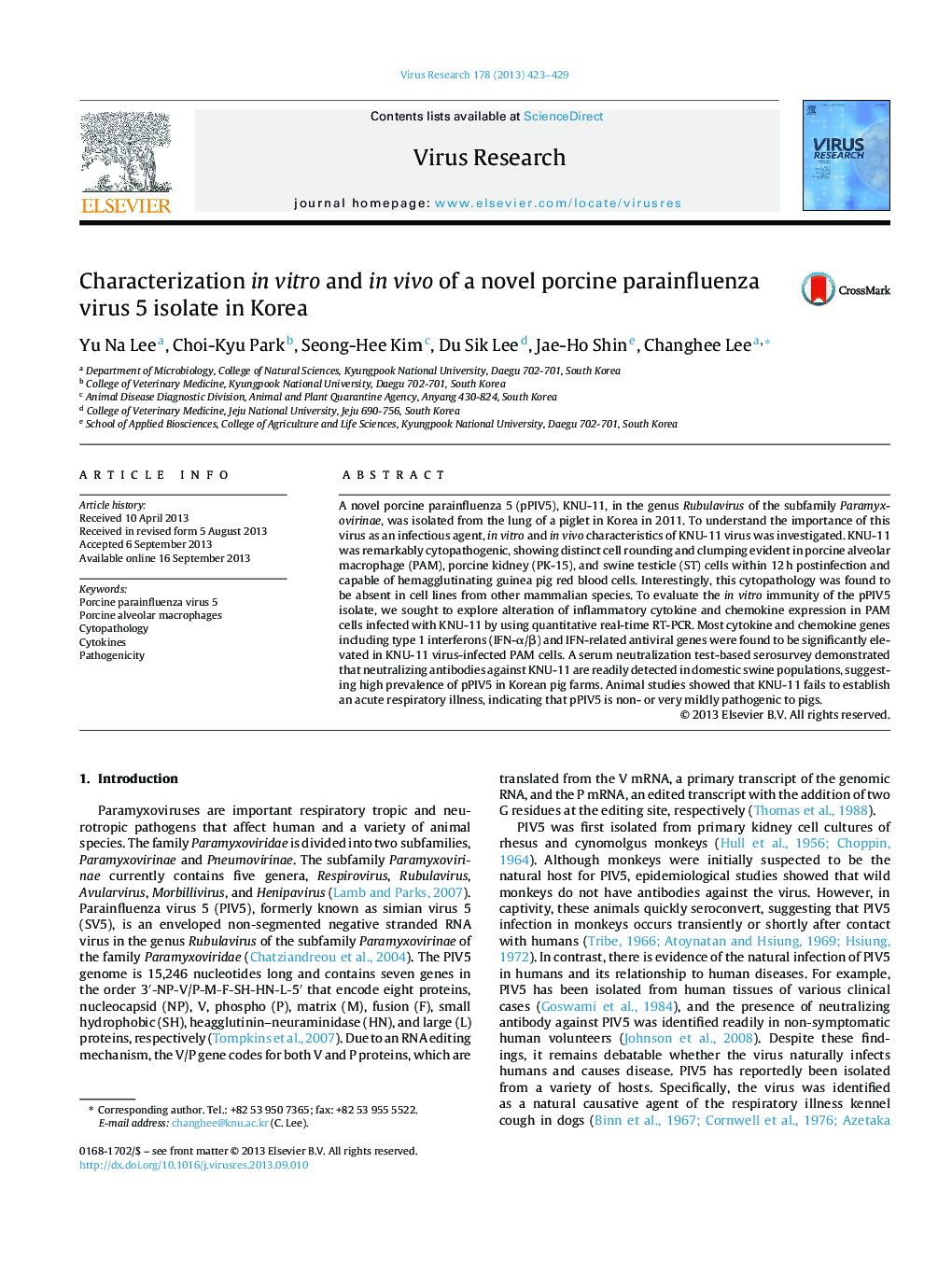| Article ID | Journal | Published Year | Pages | File Type |
|---|---|---|---|---|
| 6142713 | Virus Research | 2013 | 7 Pages |
â¢Porcine parainfluenza virus 5 (pPIV5) caused cytopathogenic infection in continuous PAM cells.â¢pPIV5 significantly modulated immune-response genes in PAM cells.â¢pPIV5 failed to establish an acute respiratory illness.â¢Pigs generated neutralizing antibodies against pPIV5 by 5 dpi.â¢pPIV5 is highly prevalent in Korean domestic farms.
A novel porcine parainfluenza 5 (pPIV5), KNU-11, in the genus Rubulavirus of the subfamily Paramyxovirinae, was isolated from the lung of a piglet in Korea in 2011. To understand the importance of this virus as an infectious agent, in vitro and in vivo characteristics of KNU-11 virus was investigated. KNU-11 was remarkably cytopathogenic, showing distinct cell rounding and clumping evident in porcine alveolar macrophage (PAM), porcine kidney (PK-15), and swine testicle (ST) cells within 12 h postinfection and capable of hemagglutinating guinea pig red blood cells. Interestingly, this cytopathology was found to be absent in cell lines from other mammalian species. To evaluate the in vitro immunity of the pPIV5 isolate, we sought to explore alteration of inflammatory cytokine and chemokine expression in PAM cells infected with KNU-11 by using quantitative real-time RT-PCR. Most cytokine and chemokine genes including type 1 interferons (IFN-α/β) and IFN-related antiviral genes were found to be significantly elevated in KNU-11 virus-infected PAM cells. A serum neutralization test-based serosurvey demonstrated that neutralizing antibodies against KNU-11 are readily detected in domestic swine populations, suggesting high prevalence of pPIV5 in Korean pig farms. Animal studies showed that KNU-11 fails to establish an acute respiratory illness, indicating that pPIV5 is non- or very mildly pathogenic to pigs.
